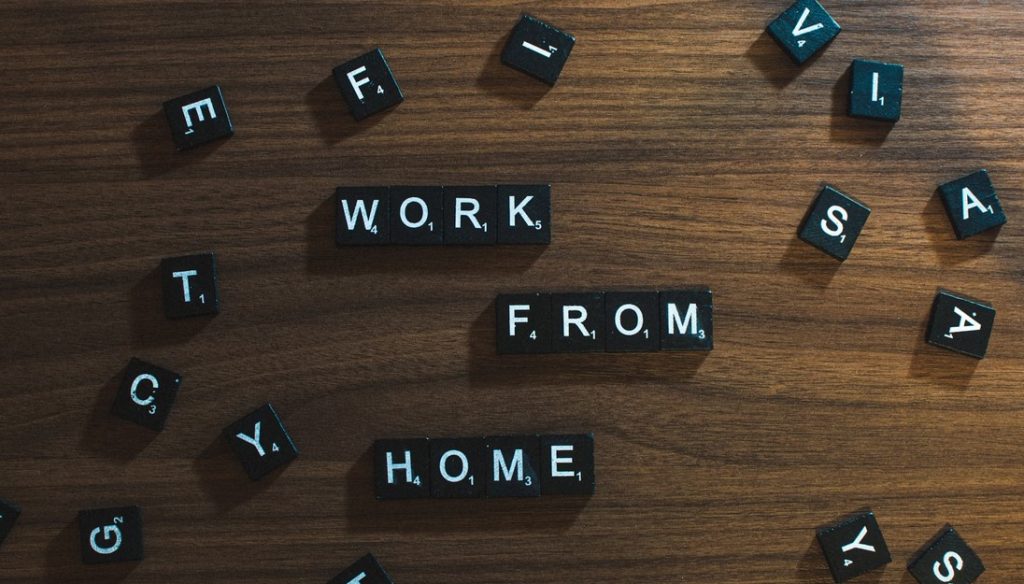Working from home offers numerous benefits, such as increased flexibility and reduced commute times, it also presents unique challenges that can contribute to heightened stress levels. This article explores effective strategies to reduce stress while working from home, helping you maintain a healthy work-life balance and optimize your productivity.
- Creating a Dedicated Workspace
- Establishing a Routine
- Maintaining Social Connections
- Managing Digital Overload
- Practicing Mindfulness and Relaxation Techniques
- Simple Digital Document Skills Are Easy To Pick Up
- Prioritizing Physical Health
- Setting Realistic Goals and Expectations
- Taking Regular Breaks and Implementing ‘Fake Commutes’
Creating a Dedicated Workspace
One of the most effective ways to reduce stress when working from home is to establish a dedicated workspace. This physical separation between your work area and living space helps create a mental boundary, making it easier to ‘switch off’ at the end of the workday.
Your workspace doesn’t need to be an entire room; a corner of your living room or a desk in your bedroom can suffice. The key is to choose a space that you can associate solely with work. Ensure this area is comfortable, well-lit, and equipped with the necessary tools for your job.
Consider ergonomics when setting up your workspace. Set up your workstation to avoid back pain and other musculoskeletal issues. Investing in a good chair, positioning your screen at eye level, and using a separate keyboard and mouse can significantly improve your comfort and reduce physical stress.
Establishing a Routine
Without the structure of a traditional office environment, it’s easy for work to spill over into personal time, leading to increased stress and potential burnout. Establishing a consistent routine can help combat this issue.
Start by setting regular working hours. This doesn’t mean you need to stick to a 9-to-5 schedule if that doesn’t suit your situation, but having set start and end times for your workday can help maintain boundaries.
Incorporate regular breaks into your routine. The Pomodoro Technique, which involves working in 25-minute focused sessions followed by short breaks, can be an effective way to structure your time and maintain productivity without becoming overwhelmed.
Don’t forget to include time for physical activity in your routine. Even a short walk or a few minutes of stretching can help reduce stress and improve your overall well-being.
Maintaining Social Connections
Feelings of isolation can be a significant source of stress when working from home. Make a conscious effort to maintain social connections with colleagues, friends, and family.
Schedule regular virtual coffee breaks or lunch dates with colleagues. These informal interactions can help replicate the social aspects of office life and provide a much-needed break from work tasks.
Utilize technology to stay connected. Platforms like Microsoft Teams, Slack, or Zoom can facilitate both work-related communication and social interaction.
Don’t neglect your personal relationships. Make time for virtual or in-person meetups with friends and family outside of work hours. These social interactions can provide valuable emotional support and help you decompress from work-related stress.
Managing Digital Overload
Set boundaries around your digital communication. Establish ‘do not disturb’ hours where you turn off notifications and communicate these boundaries to your colleagues. Use tools like email filters to prioritize important messages and reduce inbox clutter.
Be mindful of video call fatigue. While video conferencing is an essential tool for remote work, excessive use can be draining. Consider whether a phone call or email could suffice for some interactions and build in breaks between video meetings to give yourself time to recharge.
Practicing Mindfulness and Relaxation Techniques
Incorporating mindfulness and relaxation techniques into your daily routine can significantly reduce stress levels. These practices can help you stay grounded, improve focus, and manage anxiety.
Mindfulness meditation is a powerful tool for stress reduction. Apps like Headspace or Calm offer guided meditations specifically designed for workplace stress. Even a few minutes of mindfulness practice each day can make a noticeable difference in your stress levels. Deep breathing exercises are another simple yet effective relaxation technique.
Simple Digital Document Skills Are Easy To Pick Up
Proficiency with digital documents is crucial for efficient remote work. While this might seem daunting, many simple digital document skills are surprisingly easy to learn and can significantly reduce work-related stress.
Start with basic skills like creating and editing documents in Microsoft Word or Google Docs. These platforms offer intuitive interfaces and numerous tutorials to help you get started. Learning to use templates can save time and reduce stress when creating new documents.
Familiarize yourself with PDF management. Learning how to convert documents to PDF format, convert PDF to Word, combine multiple PDFs, or extract pages from a PDF can streamline your workflow and reduce frustration. Free online tools like Smallpdf, offer these functionalities.
Prioritizing Physical Health
Physical health and mental well-being are closely linked. Prioritizing your physical health can have a significant impact on your stress levels when working from home.
Regular exercise is crucial for managing stress. This could include activities like brisk walking, cycling, or home workouts.
Maintain a balanced diet to support your physical and mental health. Avoid the temptation to snack constantly when working from home. Instead, plan nutritious meals and snacks that will keep you energized throughout the day.
Ensure you’re getting enough sleep. Establish a consistent sleep schedule and create a relaxing bedtime routine to improve your sleep quality.
Setting Realistic Goals and Expectations
Working from home can sometimes lead to unrealistic expectations about productivity. It’s important to set achievable goals and manage your own expectations, as well as those of your colleagues and supervisors.
Use time management techniques like the Eisenhower Matrix to prioritize tasks based on their importance and urgency. This can help you focus on what truly matters and reduce the stress associated with trying to do everything at once.
Be honest with yourself and others about what you can realistically accomplish. If you’re struggling with workload or deadlines, communicate this clearly with your team or manager.
Taking Regular Breaks and Implementing ‘Fake Commutes’
When your home is your office, it can be tempting to work longer hours, skipping breaks and potentially leading to burnout. Regular breaks are crucial for maintaining productivity and reducing stress.
Implement the ’20-20-20′ rule to reduce eye strain: every 20 minutes, look at something 20 feet away for 20 seconds. This simple practice can help alleviate the physical stress of prolonged screen time.
Consider implementing a ‘fake commute’ at the beginning and end of your workday. This involves taking a short walk or engaging in another activity to mentally separate your work time from your personal time. This practice can help create boundaries and reduce work-related stress spilling into your personal life.



